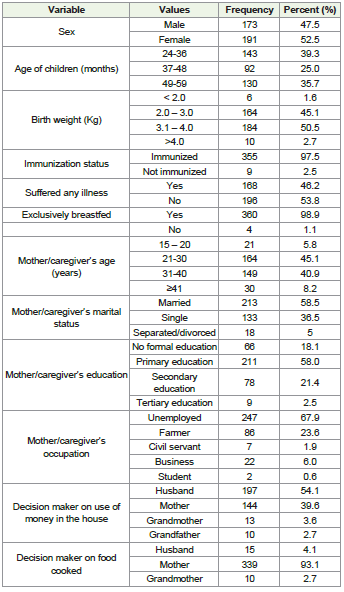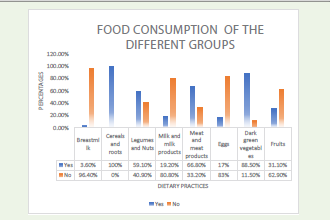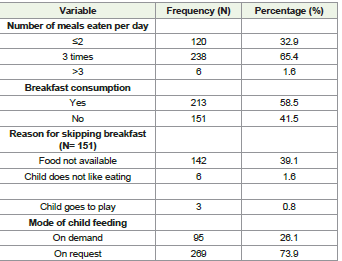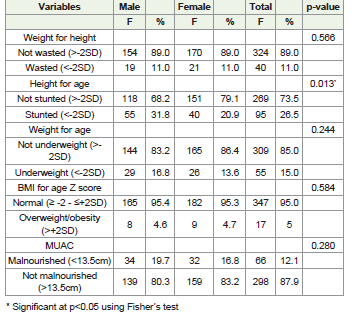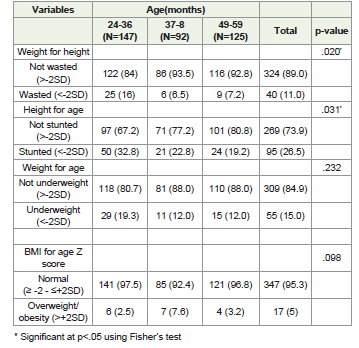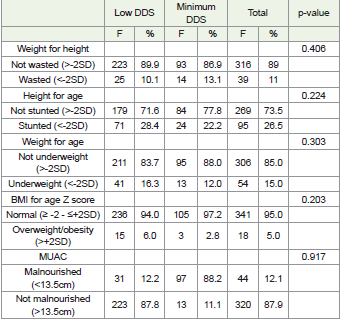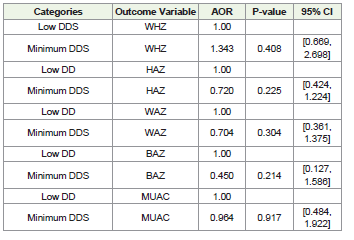Review Article
Ketoanalogues Therapy for CKD Patients: History and Current Status
Shejwalkar P*, and Sonavane Y
Jomeril Nutrihealth, Nashik, India
*Corresponding author:Pushkar Shejwalkar, Jomeril Nutrihealth, Nashik, India Email: info@jomeril.com
Article Information:Submission: 26/02/2024; Accepted: 29/03/2024; Published: 08/04/2024
Copyright: © 2024 Shejwalkar P, et al. This is an open access article distributed under the Creative Commons Attribution License, which permits unrestricted use, distribution, and reproduction in any medium, provided the original work is properly cited.
Introduction
Ketoanalogues therapy is a well-known nutritional therapy for
delaying the start of dialysis in chronic kidney disease (CKD). The
product is presented in packages containing 100 tablets and each
tablet contains 630 mg of keto analogues of essential amino acids and
essential amino acids. Ketoanalogues therapy is used to supplement
low-protein diets. It allows nitrogen intake to be decreased and
leads to a reduction in the accumulation of by-products of nitrogen
metabolism. Thus, protein malnutrition can be avoided and a normal
course of protein metabolism is guaranteed.
The principal goal of well-planned, protein-restricted dietary
regimen in compliant patients is to decrease the accumulation of
nitrogen waste products, hydrogen ions, phosphates and inorganic
ions while maintaining an adequate nutritional state. This goal is
achieved with Ketoanalogues therapy (Ketoanalogues + protein
restricted diet). Ketoanalogues capture excessive nitrogen residues
(of the urea) in patients with chronic renal insufficiency, neutralizing
them in the process of transamination, thus breaking the vicious
circle of the disease.
The use of Ketoanalogues therapy is based on the reversible
transaminase reactions which take place in the humans, and this
allows formation of relevant essential amino acids.These substances
provide two benefits of Ketoanalogues therapy which decrease the
amount of nitrogen to be eliminated by kidneys and help to stabilize
kidney function: Nitrogen intake can be restricted and endogenous
amino groups can be used thus ureagenesis is limited.
The use of calcium salts of keto acids also allows Ketoanalogues
therapy to correct calcium and phosphate metabolism disturbances
Keto analogues are different from amino acids and they counteract
to certain metabolic alterations which are observed in CKD
patients. The calcium salts of the keto acids foster the correction of
hyperphosphatemia and of secondary hyperparathyroidism which
are well known in chronic kidney disease.
The beneficial effect on the resistance to insulin, a factor which
leads to increased cardiovascular morbidity and mortality, and the
action on the cell sodium pumps appear to involve a decrease in the
production of uremic toxins of dietary origin
[115].
When used in accordance with the recommended dosage
appropriate to the indication and in compliance with the known
contraindications and precautions for use, Ketoanalogues therapy
has very good efficacy/safety and benefit/risk ratios
[115].
In Ketoanalogues therapy effects the metabolism of the CKD
patient and leads to quality of life by decreasing uremic symptoms
and improving metabolic disturbances associated with CKD.
Mode of Action:
Ketoanalogue treatment allows for protein intake below the
minimum daily requirement (0.6 g/kg/day). Furthermore, the
combination of amino acids and ketoanalogues allows for a significant
reduction in nitrogen intake. Although ketoanalogues of amino acids
contain less nitrogen, they have the same effect on the nitrogen
balance, according to experimental and clinical investigations [117].
The required quantities and balances of ketoanalogues in the formula
were established in accordance with the demand for essential amino
acids as per WHO 2007 standards, as opposed to other formulae that
are based on previous criteria. Alpha-ketonic acids are simple carbon
chains that lack an amino group. These analogs lack nitrogen and do
not generate nitrogenous byproducts. They absorb amino groups
and can be converted back into the matching amino acid in the
organism. In the transaminase reaction that results in its synthesis,
urea-generating amino acids such as glutamine and alanine serve as
amino group donors. As a result, these amino acids are diverted from
their original urea-generating pathway. This mechanism comprises
amino group recycling, nitrogen conservation, and nitrogen trapping
[115]. The transfer of the amino group to the ketoanalogues results
in nitrogen savings and a direct suppression of ureagenesis. This
behaviour was observed in numerous investigations. Inhibition
of ureagenesis persists for 8 days after discontinuation of the
ketoanalogues [115,118].Pharmacodynamic studies provide valuable information on the
metabolic effects of therapy and serve as a solid foundation for the
use of ketoanalogue-containing formulas. Ketogenic diets cure the
majority of CKD metabolic abnormalities, such as phospho-calcic
disorders, metabolic acidosis, and hypertriglyceridemia. Furthermore,
the use of protein derived primarily from vegetables promotes
increased nutritional diversity and patient compliance.The retention
of nitrogenous byproducts is significant in uremic toxicity. Low protein
diets have been advocated for many years as a symptomatic
treatment for uremic symptoms. Ketoanalogue treatment lowers
dietary acid load and phosphate intake. At the same time, it avoids
acidosis and hyperphosphatemia, both of which contribute to the
development of metabolic and endocrine abnormalities in chronic
kidney disease.
In vitro experiments have shown that ketoleucine and leucine
can increase protein synthesis. These substances induce increased
aggregation of polyribosomes. Ketoleucine stimulates the amino
transferase activity (stimulating transfer of the amino group to alphaketonic
acid) [119,120].
According to some authors, ketoanalogues may hinder protein
breakdown, and would therefore have an anti-catabolic effect. In
addition, the decrease in urinary protein excretion contributes to
the rise in serum albumin and the maintenance of various indices of
nutritional status within the normal range which is usually observed
in patients on ketodiet [121].
Presence of calcium in creates beneficial effects on calcium/
phosphate metabolism and hyperparathyroidism. Ketoanalogues
therapy has an undeniable hypophosphatemic effect, due to the antiabsorbent
action on the phosphates as a result of the formation of
insoluble calcium phosphate in the intestine [55].
Clinical Documentation:
Numerous clinical trials have established the efficacy and
acceptability of ketoanalogues treatment, with the majority of
patients reporting a clear improvement in their overall health while
their physical activity remained constant or improved [115].Retardation of the progression of CKD:
Numerous clinical investigations have consistently indicated that
ketoanalogue treatment improves several features of CKD. Clinical
investigations and meta-analyses have proven that combining a
reduced protein diet with Ketoanalogues therapy considerably
slows the course of renal failure and delays the start of dialysis.
Teschan’s re-analysis of the Modification of Diet in Renal Disease
Study (MDRD) yielded the most remarkable results
[16]. The pair-wise comparison revealed that the average loss of GFR in the
amino/keto acid supplemented group was 53% slower than in the
control group. Other smaller clinical studies have revealed similar
findings. A recent meta-analysis published in the Cochrane Library,
integrating 7 clinical studies, three of which used ketoacids, indicated
that this protein diet reduced the risk of kidney mortality by around
40% when compared to a high or unrestricted protein intake [135].
Several clinical investigations have indicated that a low protein diet
combined with ketoacid supplementation can postpone the onset of
dialysis [42,69,135,116]. Walser and Hill demonstrated that patients
with GFR < 10ml/min can be safely treated with a low protein diet
and ketoacids for nearly a year without dialysis [8]. Similar findings
were observed by Aparicio [13] and a re-analysis of the MDRD
research [16]. A randomised, double-blind, placebo-controlled trial
found that ketoanalogue therapy protects renal function and helps
patients maintain their body mass index. Ketoanalogues were found
to be both safe and effective in slowing the course of renal failure
and maintaining nutritional status in CKD patients. GFR remained
constant in the Ketoanalogues treatment group while decreasing
considerably in the placebo group, indicating renal function
protection. Serum total proteins dropped in the placebo group, and
serum albumin trended downward, whereas both of these measures
were unchanged in the Ketoanalogues treatment group [102].A long-term, prospective, randomised study discovered that
ketoanalogue medication has clear benefits for CKD patients. 186
patients were chosen at random and followed for three years, with
updates every six months. The glomerular filtration rate decreased
slightly from 26 to 23 mL/min in the ketoanalogues treatment group,
but the decreases were substantially larger in the other two control
groups. The authors discovered that this therapeutic technique
significantly delays the progression of renal failure and reduces
proteinuria[123].
CKD patients were given a protein-restricted diet supplemented
with amino acids and ketoanalogues for two years. Urinary urea
excretion dropped after 3 months and then marginally increased
at 2 years. There was no significant difference in total fat mass or
percentage fat mass. Lean body mass stabilised at 6 months, then
rose dramatically between 6 and 24 months. The scientists found
that a protein-restricted diet supplemented with keto mimics is
nutritionally safe for the long term. [124,125].
The nephroprotective function appears to be effective in both
diabetic and nondiabetic nephropathies. The benefits of a low-protein
diet combined with ketoanalogue therapy on metabolic abnormalities
associated with chronic renal disease appear to have potential
favourable effects on morbidity and mortality [115], as noted in
numerous recent meta-analyses [69,15].
In a study of 65 CKD patients followed for up to 5½ years, a
protein-restricted diet combined with Ketoanalogues treatment
resulted in a 65% reduction in progression [56]. Patients who follow
the advised diet experience a significant slowdown of the progression
of renal failure, as well as a large delay until end-stage renal failure.
Several clinical trials have studied and proven that protein restriction
and keto acid treatment prolong the course of CKD. [2-9, 11-16, 18-
20, 22, 23, 25-28, 30, 35-37, 40, 42, 44, 45, 50, 54, 56, 58, 63, 64, 68, 69,
71-76, 78, 80-85, 95-97, 99, 101, 126, 127 128 129].
Beneficial effects on metabolic disturbances associated with CKD:
The therapy also relieves uremic symptoms and improves
metabolic disturbances associated with CKD giving a better quality
of life. The following metabolic complications have been shown to
be significantly improved by a Ketoanalogues therapy -supplemented
low protein diet in predialysis CKD patients: correction of
disturbances in the calcium and phosphate metabolism; secondary
hyperparathyroidism and renal osteodystrophy; normalization of the
carbohydrate metabolism including lowering of insulin; resistance
and reduction in hyperinsulinemia; improvement of the disturbed
serum lipid profile; improvement in endocrine disturbances.
Information on the effect of Ketoanalogues therapy on these
metabolic complications are given below.It has been demonstrated that in patients with advanced CKD,
a low protein diet supplemented with ketoanalogues can reduce the
amount of Erythropoietin required to maintain target haemoglobin
levels by approximately 35%. This effect appears to be linked to the
correction of moderate hyperparathyroidism [103,104].
Majority of the clinical studies investigating the effects of keto
acids on metabolic disorders associated with CKD are on Calcium
/ Phosphate metabolism distrubances namely renal osteodystrophia.
In one study, hyperparathyroidism was improved in more than
80% of patients [43]. Ketoanalogues treatment protects or improves
bone deterioration caused by renal failure [32]. Ketoanalogues can
correct the majority of carbohydrate metabolism disorders seen in
uremia, including improved tissue sensitivity to insulin [49,122], even
in uremic diabetic patients; reduced circulating insulin levels due to an
increase in insulin metabolic clearance rate [21] and improved insulin
inhibitory action on endogenous glucose production [17]. Meat,
poultry, fish, and dairy products are the primary sources of protein
and phosphorus. Reducing phosphorus consumption has been found
to reduce the development of secondary hyperparathyroidism in
CKD. Calcium salts of ketoacids act as phosphate binders, increasing
the phosphorus-lowering effect of protein restriction [55].
The effect of ketoanalogue treatment on PTH levels is explored
in individuals undergoing maintenance hemodialysis for up to
ten years. Following treatment, there was a statistically significant
decrease in PTH and inorganic phosphate levels. Early administration
of ketoanalogues therapy may delay or even prevent the development
of renal osteodystrophy due to a direct pharmacological effect of
ketoanalogues [51,55,79,32]. The effects on phosphate and calcium
metabolic indices are long-lasting. Beneficial effects on plasma
phosphate and PTH concentrations were maintained in patients with
advanced CKD using ketoanalogues treatment throughout a 2-year
period [130].
In continuous ambulatory peritoneal dialysis, the quelating agents
were replaced with ketoanalogues. After three months phosphate
levels decreased significantly, serum calcium levels increased and
parathormone levels decreased. All nutritional parameters increased
at the end of the study. The authors concluded that calcium salts
of ketoanalogues are effective alternative to aluminum containing
phosphate binders [105,43,48].
Metabolic acidosis, which is common in CKD, is caused by
poor hydrogen ion excretion, the majority of which is produced
by the metabolism of sulfur-containing amino acids [120]. This
acidosis has various negative implications, including impaired
protein metabolism, glucose tolerance, and bone metabolism. Only
a severe reduction or suppression of animal-derived protein can
cure metabolic acidosis [115]. Lower bicarbonate levels were seen in
patients treated with keto acids, indicating a beneficial effect against
metabolic acidosis [32,65,90].
Abnormal glucose metabolism is seen in almost half of CKD
patients. This is typically manifested as impaired glucose tolerance
and hyperinsulinemia. Glucose tolerance was improved, with
considerably lower insulin levels [49, 122, 21, and 131]. It has been
demonstrated that a protein-restricted diet supplemented with
keto analogues protects erytrocytes from lipoperoxidation in CKD
patients, which improves some metabolic outcomes of uremic
syndrome [22]. In 61 male CKD patients treated with ketoanalogues
[132,133], blood triglycerides decreased significantly while Apo A1
and the Apo-A1/Apo-B ratio increased significantly. These are crucial
lipid metabolism indicators. Clinical studies have demonstrated
that a Ketoanalogues therapy-supplemented low-protein diet lowers
triglyceride level [115].
In two groups of patients with severe CKD, pH and bicarbonate
levels were significantly higher in those treated with a protein restricted
diet supplemented with a combination of amino acids
and ketoanalogues. The authors proposed that the vegetarian nature
of the diet, which must be supplemented with ketoanalogues, was
responsible for this impact in relation to its very low acidifying action
[134].
The evolution of nutritional status after initiation of hemodialysis
in patients previously treated by protein restricted diet supplemented
with keto acids was assessed. Albumin, prealbumin and body mass
index increased in all patients and lean body mass remained stable.
The authors conclude that treatment was nutritionally safe. Protein
restricted diet supplemented with essential amino acids or ketoacids
has no detrimental effects on nutritional parameters. Also, the
survival during dialysis was not negatively affected in patients who
were previously treated with a supplemented protein restricted diet
[27,110].
In CKD patients with Glomerular Filtration Rate (GFR) clearance
less than 25 ml/min, a protein-restricted diet containing 0.3 g/kg/d of
vegetable protein supplemented with ketoanalogues therapy resulted
in a significant reduction in urinary albumin excretion and fractional
renal albumin clearance, while serum albumin increased significantly
[41]. It has been shown that protein restricted diet supplemented
with ketoanalogues can maintain nutritional status of the patients.
Investigators conclude that this therapy can constitute an efficient
therapeutic alternative for CKD patients since it also reduces serum
urea nitrogen and improves calcium and phosphate metabolism.
These findings have been confirmed by a large number of studies
covering hundreds of CKD patients [10, 17, 21, 26, 28-30, 32, 41, 43, 46-48, 51-53, 55, 57, 60, 65-67, 72, 77-79, 88, 89, 91, 94, 99, 100].
Conclusion
Protein-restricted diets supplemented with ketoanalogue therapy
should be recommended to all CKD patients in conjunction with
other nephroprotective measures such as blood pressure control and
angiotensin converting enzyme inhibitor medications. It has been
found to retard the progression CKD and various other beneficial
effects discussed above.
References
24. Gazzara G. et al.: Conservative Treatment in Children With Chronic Renal Failure. Unpublished study

